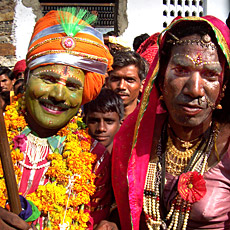Posted inFestivals
Gavari – A Dance Drama of Bhils
Vibrant, vigorous and graceful! Folk dances of Rajasthan performed gracefully by the colorful crowd punctuate Rajasthan’s barrenness, turning even the deserts into fertile basin of limitless colors and variations of…
